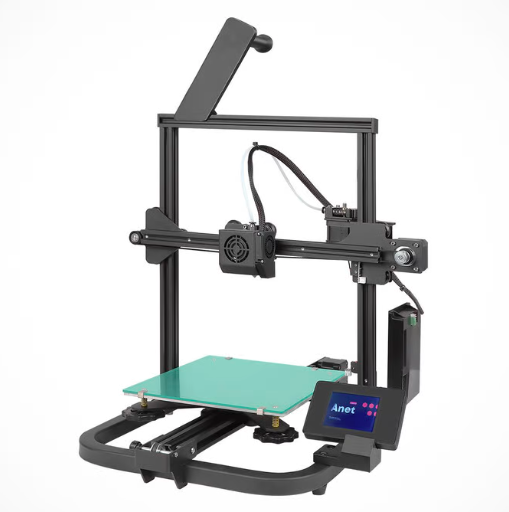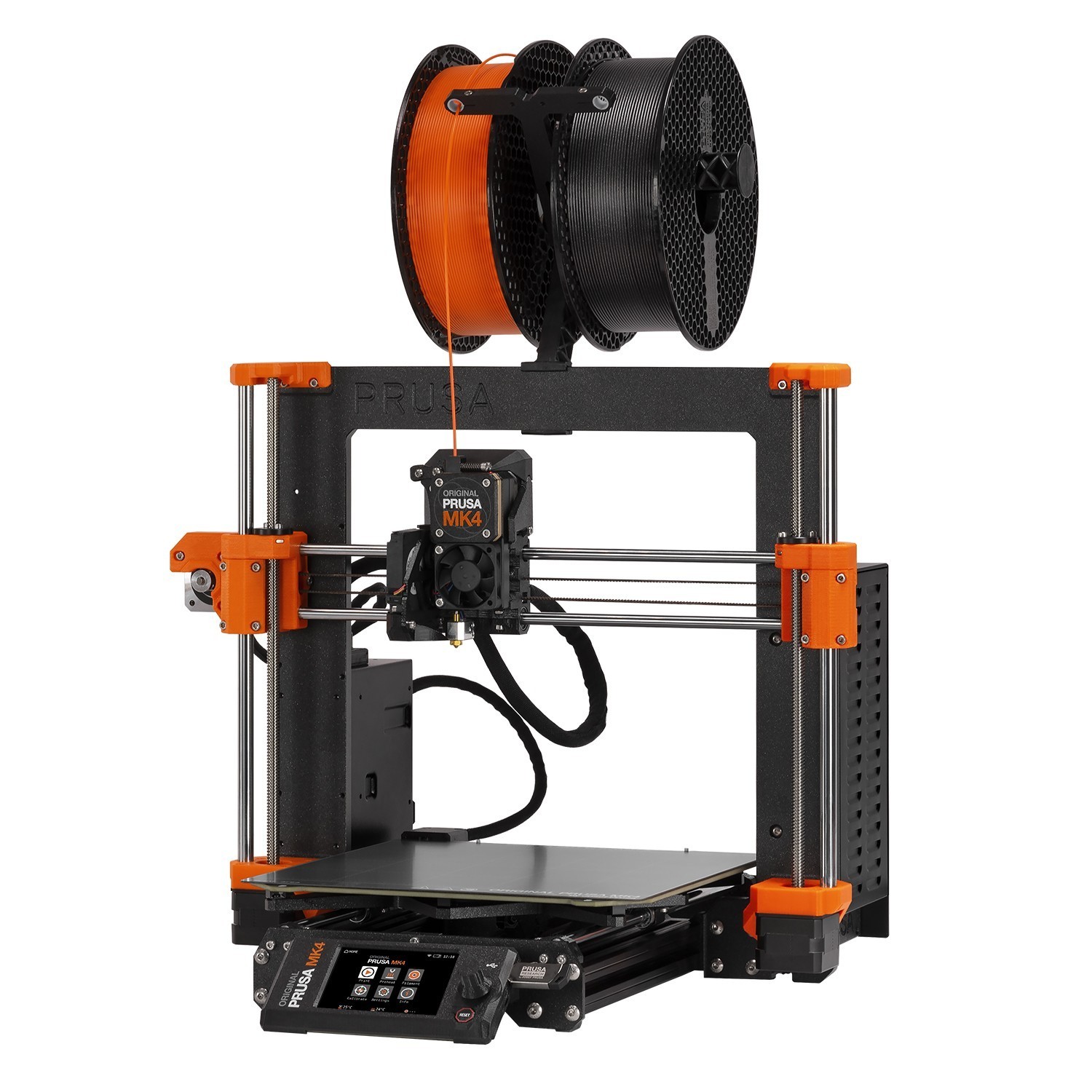Compare A8 V2 vs Original Prusa MK4 3D Printer
Comparison between the best 3D printers
Choose the best 3D printer at the best price. The cheapest 3D printers are here.
Buy a 3D printer here with 3D Fila.
 |
 |
|
| Model | A8 V2 |
Original Prusa MK4 3D Printer[BUY Original Prusa MK4 3D Printer] |
| Printing Material | Filament | Filament |
| Buy Filament for Anet A8 V2 | Buy Filament forPrusa Original Prusa MK4 3D Printer | |
| Estimated price | $129,00 | $1099,00 |
| Manufacturer | Anet | Prusa |
| Release Year | 2021 | 2023 |
| Print Volume [mm] | 220x220x250 | 250x220x210 |
| Printer Size [mm] | 428x441x486 | 500x400x550 |
| Weight [kg] | 6,2 | 7 |
| Power Loss Recovery | NO | YES |
| Enclosed printer | NO | NO |
| Bed Leveling | Manual | Automatic |
| Filament End Sensor | NO | YES |
| Bed type | Heated | |
| Power supply system | Bowden | Direct Drive |
| Standard nozzle | 0,4 | 0,4 |
| Maximum Nozzle Temperature [°C] | 230 | 300 |
| Maximum Bed Temperature [°C] | 120 | |
| Maximum printing speed [mm/s] | 150 | 180 |
| Filament holder | YES | YES |
| Camera for supervision | NO | NO |
| Recommended filaments | PLA | PLA, ABS, PETG, PC, Nylon, Tritan, PP |
| Recommended slicers | Cura, Simplify, Slic3r, IdeaMaker | Cura, Simplify, Slic3r, IdeaMaker, PrusaSlicer e outros |
| Maximum Resolution [mm] | 0,1 | 0,1 |
| Processor | Custom 32-bit xBuddy electronics with STM32 | |
| Display | Display touchscreen 2,8'' | Display touchscreen 3,5'' |
| Power Supply | 110/220V / 250W | 240 W |
| Connectivity | SD / USB | USB / Wi-Fi / internet via Prusa Connect |
| Operating systems | Windows, Mac, Linux | Windows, Mac, Linux |
| Date of registration in the system | 2022-11-10 | 2023-06-06 |
| Release date | 2021 | 2023 |
| Extra features | The Anet A8 V2 is a Cartesian-XZ type 3D printer with a build volume of 220 x 220 x 250 mm, Ender 3 design and V-slot assembly. It has a 32-bit motherboard and touchscreen interface, promising ease of use. It uses open source firmware and has thermal failure protection. It stands out for its cable organization and the absence of a heated bed, focusing on energy savings and PLA printing. It comes with an external power adapter, aiming at greater safety, especially for beginners and educational use. | The Original Prusa MK4 stands out with automatic first-layer calibration via Loadcell sensor, high-speed enabled by Input Shaper and Nextruder for precise prints. It includes quick-change nozzles, customizable UI, and Ethernet/Wi-Fi connectivity. It supports a wide range of materials, from PLA to flexibles. Equipped with a 32-bit xBuddy mainboard and precise stepper motors, it offers exceptional print quality, enhanced security, and remote printing options via Prusa Connect. |
| Support for multiple colors and materials (AMS and CFS) | NO | NO |
Notes * |
||
| Cost-benefit | 6 / 10 | 6 / 10 |
| Hardware | 0.5 / 10 | 2.8 / 10 |
| Tela | . | . |
| Print volume | 3 / 10 | 3 / 10 |
| Performance | 1 / 10 | 1 / 10 |
| [BUY Original Prusa MK4 3D Printer] |
Conclusion |
| In evaluating the Anet A8 V2 and the Original Prusa MK4 3D printers, several key differences emerge that cater to different user needs and budgets. The Anet A8 V2 is significantly more affordable, making it an attractive option for beginners or hobbyists who prioritize cost over advanced features. Its straightforward design and manual bed leveling might appeal to users looking for an entry-level printer to learn the basics. On the other hand, the Original Prusa MK4, while priced substantially higher, offers numerous premium features tailored for more serious enthusiasts and professionals. It boasts automatic bed leveling, a wider range of compatible materials, and enhanced printing capabilities that justify its price point. Features like power loss recovery and a much faster maximum printing speed position it as a reliable choice for demanding projects. Ultimately, the choice between these two printers hinges on the balance between budget and feature preferences. Those who prioritize economical solutions with basic functionality may find the Anet A8 V2 suitable for their needs. Conversely, users seeking advanced technology, superior print quality, and enhanced user experience should invest in the Original Prusa MK4. Thus, the best choice is contingent upon individual requirements and financial considerations, emphasizing the notion that both printers serve their respective niches effectively. |

